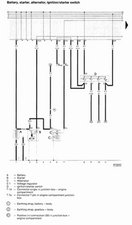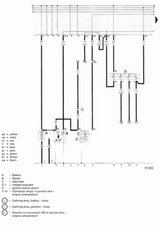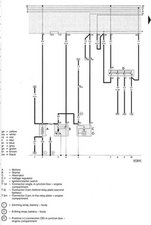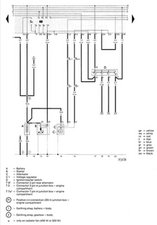How to fix a non chargering alternative
How to fix a non chargering alternative
I'm hoping I've understood your question to be asking how to fix a non-charging alternator.
Having fixed a few alternators in my day, my first goal is to figure out exactly what's wrong. You want to see if it's working to start with. With the car running, put a voltmeter on the battery. You should see at least 14 volts vs. the 12 volts you should see when the car is turned off. If you don't have 14 volts or more, then likely the alternator isn't putting out the power needed to run the accessories and charge the battery.
If that's the case the alternator is usually repairable. By far the most frequent problem is that the brushes that provide electrical continuity to the spinning stator wear down over time and when they get worn far enough they will no longer make contact and the alternator will not charge.
After that, the voltage regulator that's built into the alternator is the next most likely part to fail. The regulator takes the rough inverted sine wave signal and smoothes it out and limits it to the normal output voltage, somewhere above 14 volts usually. When the regulator fails, again you can end up without any output voltage.
You can generally tell if the brushes have worn out simply by examining them; they'll be short and not pressed against the shaft firmly, and the shaft they ride on may be worn out as well. The brushes are easily replacable and the shaft can usually be replaced as well.
If the brushes aren't obviously bad, then the next step is to have the alternator tested. Here in the US, most auto parts stores have an alternator tester that will tell you what's wrong with it so you don't have to guess what to replace to fix it, and the testing is almost always free (they're hoping to sell you a new alternator, obviously).
That's where you need to start; check the voltage and if it's not what it should be, get the alternator tested. Depending on what you find, we may be able to suggest further steps to get your Vanagon running again.
It would help if you gave us the year and any other model information needed to determine the correct parts your Transporter takes.
このアンサーは役に立ちましたか?
@makende if by "non chargering" you are referring to the battery not being charged, we would need to know what you have tried. The very first thing you want to do is to heck your battery. First check your voltage at the battery. Using a voltmeter place Negative to negative on the battery, positive to positive on the battery. With the van not running test your battery. It should read around 12.5 volts with nothing on. Next check it while the engine is running. Negative to negative on the battery, positive to positive on the battery. You want to see between 13.5-14 volts. If you get a low reading that means that either your battery is dying or your alternator is on the way out. If the voltage is low, it is most likely your alternator that needs repair. Since you did not tell us the exact year and the exact engine size, here are a few of the charging circuits diagrams I have.
First is a 1.9L engine

Next is a 2.1L engine

Next is a 2.1 L Digijet engine

THe last one I have is for the 1.6 and 1.7L Diesel

Let us know what you find out. Yes, your alternator can be rebuilt, but we would need to know more information about your T3
Here is a decent video that goes over the rebuild and this one shows the regulator swap
このアンサーは役に立ちましたか?
過去 24時間: 0
過去 7 日: 4
過去 30 日: 14
今までの合計 209